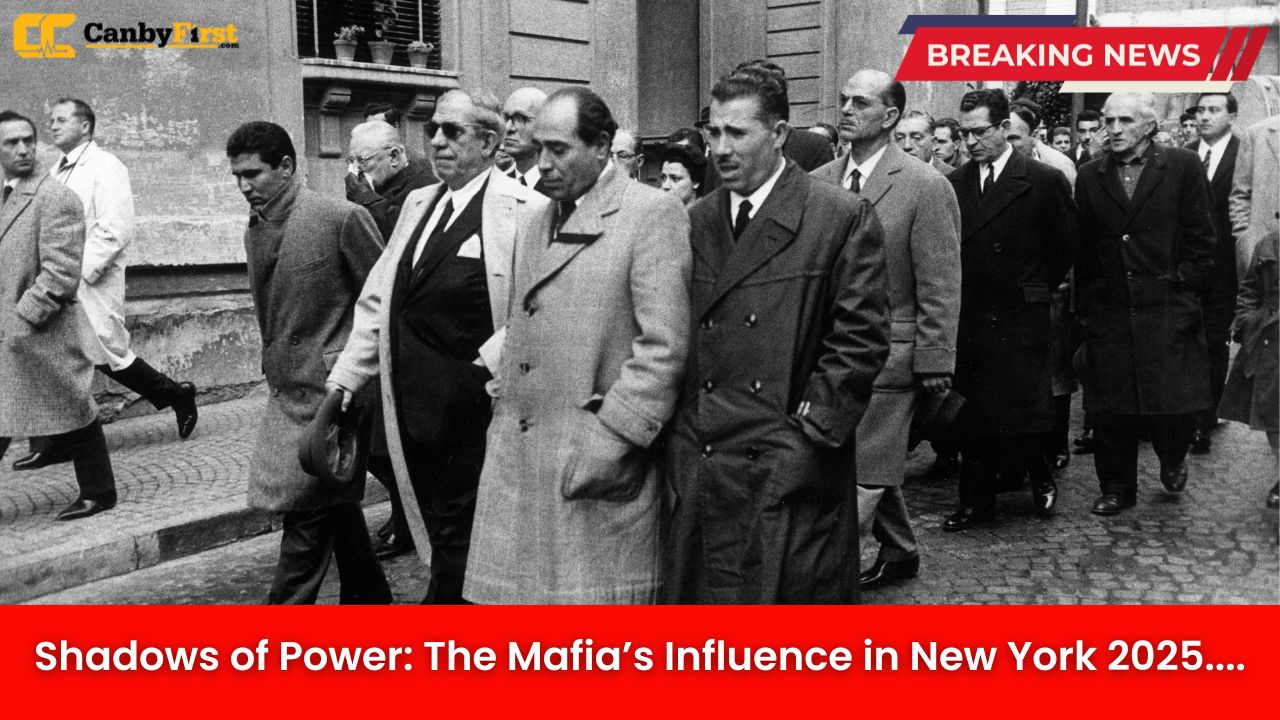New York, US: In the heart of America’s busiest metropolis, whispers of an age-old secret society still echo down narrow corridors of power. As 2025 unfolds, the Mafia in New York persists—shifting, adapting, and quietly shaping facets of city life even under the glare of modern law enforcement.
A Legacy That Refuses to Fade
Though the heyday of street-corner rackets and high-profile mob hits may belong to cinematic history, the five major crime families that once dominated New York’s underworld remain present. Their power today is subtler, their reach woven into legitimate enterprises: real estate development, waste-management contracts, private security firms, and more. Rather than brazen displays of muscle, they favor financial influence and strategic alliances.
Modern Operations: Business as Usual
In 2025, the Mafia’s core activities have diversified:
Also Read
-
Construction and Real Estate: Front companies bidding on city contracts continue to serve as vehicles for money laundering and “no-show” jobs, enriching family coffers while masking illicit proceeds.
-
Labor Unions and Lean Workforces: By maintaining footholds in key unions, mob operatives influence hiring and project allocations, quietly steering millions in public and private sector spending.
-
Financial Schemes: Underground lending (“the goombah loans”) persists, now facilitated through digital payment platforms to evade paper trails. Interest rates remain punishing, trapping small business owners in cycles of debt.
Instead of street corner meetings, crucial decisions often play out in encrypted chats, encrypted VOIP lines, and discreet gatherings at family-owned restaurants or suburban retreats.
Law Enforcement’s Evolving Playbook
Since the early 2000s, federal and city prosecutors have weakened Mafia hierarchies through targeted RICO indictments and undercover operations. In 2025, New York’s Organized Crime Task Force employs:
-
Digital Surveillance: Advanced forensics trace encrypted communications and cryptocurrency transactions.
-
Financial Disruption: Coordinated actions freeze assets and dismantle shell corporations in real time.
-
Witness Protection Modernization: Enhanced relocation programs and digital identities help turn former associates into cooperating witnesses.
Yet despite high-profile convictions this decade, including several “capos” sentenced in landmark racketeering trials, new figures quietly ascend. Law enforcement admits that dismantling one layer often reveals another waiting in the wings.
Digital Evolution and New Frontiers
The Mafia’s embrace of technology—once a liability—has become an asset:
-
Cryptocurrency Holds: Family treasuries now include sizable holdings in Bitcoin and privacy coins, hedging against asset forfeiture.
-
Online Betting Rings: Unregulated global sportsbooks provide steady revenue streams, operated through offshore servers and hidden behind layers of proxies.
-
Deepfake Disinformation: Rumors persist of deepfake videos used to intimidate rivals or mislead investigators, though concrete evidence remains elusive.
By blending analog influence with digital sophistication, traditional crime families maintain an edge in an era of rapid technological change.
Community Impact and Public Perception
For many New Yorkers, the Mafia feels like folklore. Tourists buy T-shirts referencing “The Godfather,” and downtown walking tours pause at sites of historic mob landmarks. Yet in certain neighborhoods—particularly outer boroughs—familial allegiances and quiet coercion still shape local economies:
-
Small Businesses: Some shop owners report unexplained “protection fees” to avoid vandalism or fines.
-
Construction Sites: Rumors of union grievances delaying projects echo the old threats, deterring developers from challenging entrenched interests.
-
Social Services: Community leaders note that funding for youth programs sometimes shifts according to informal mob-linked donations, creating complex loyalties.
Despite decades of aggressive policing, the specter of organized crime remains an undercurrent in parts of the city.
The Road Ahead: Reform and Resilience
Looking forward, both sides of the conflict are poised to adapt further. Experts predict:
-
Greater Federal Coordination: Modular task forces spanning agencies—FBI, IRS, Homeland Security—will intensify financial forensics to outmaneuver digital cloaking.
-
Blockchain Transparency Tools: New analytic platforms may expose hidden cryptocurrency flows, turning the Mafia’s own tools against them.
-
Community-Based Resilience: Grassroots programs aim to offer alternatives to neighborhoods historically under mob sway, reducing local tolerance for protection rackets.
At the same time, analysts caution that as long as profit and power intersect, organized crime will find niches to exploit.
Conclusion: An Enduring Shadow
In 2025, the Mafia in New York is neither omnipotent nor obsolete. It survives through calculated evolution—remaining just enough in the shadows to preserve old revenues while venturing into new arenas of digital finance and subtle influence. For a city that has repeatedly stamped out criminal empires only to watch new leaders rise, the story of organized crime is one of perpetual adaptation. As law enforcement and communities strengthen their defenses, the next chapter in New York’s underworld saga is already being written—quietly, strategically, and inevitably.












